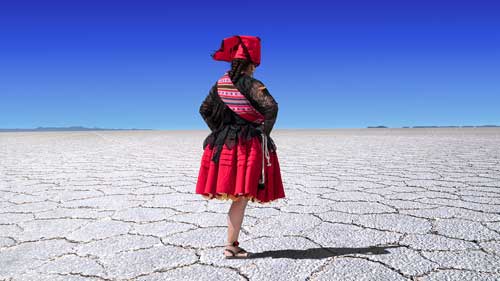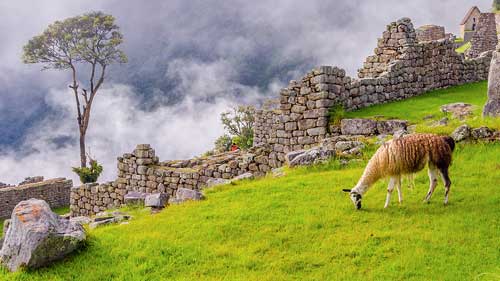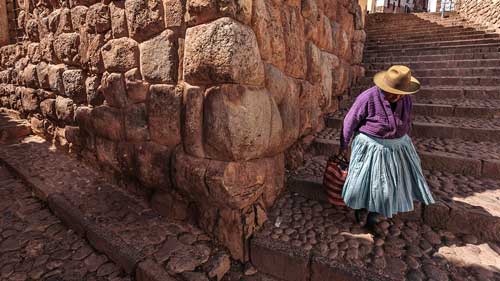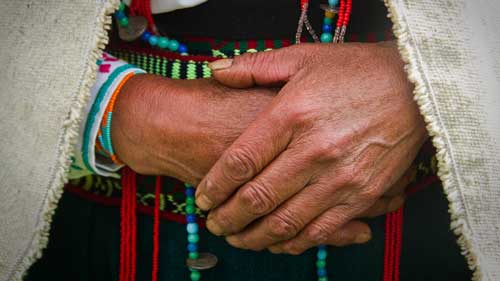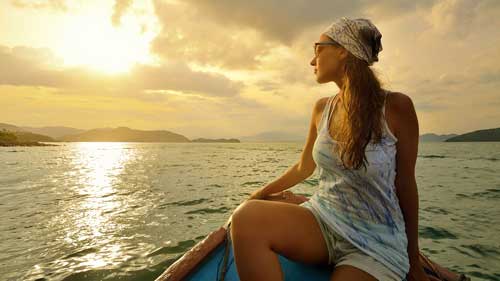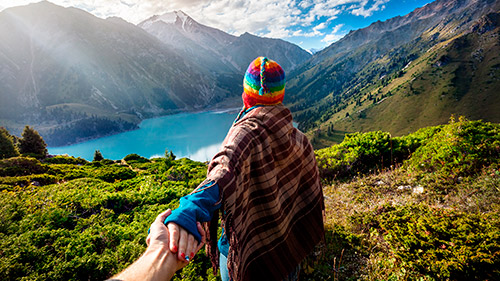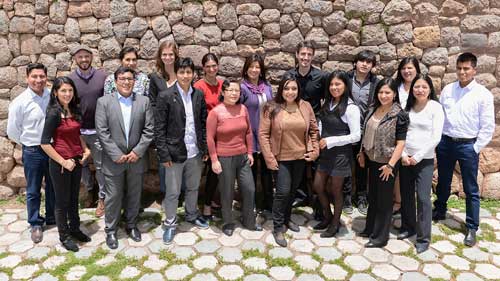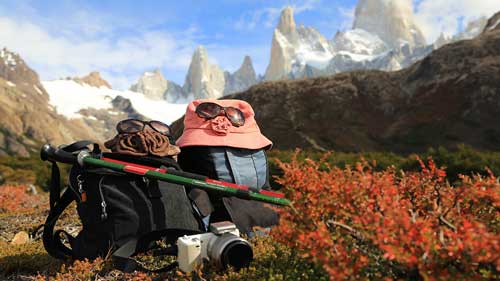How can I tour the Galapagos Islands?
There are 2 main options:
- CRUISES: Yachts and cruise ships which follow set itineraries to specific islands. The islands visited depend on the cruise chosen, itinerary length, departure date. Cruises are often seen as a better opportunity to see more variety of wildlife and geography than the land-based options.
- LAND-BASED or ISLAND HOPPING: These tours are based from hotels in the towns on one or more of the inhabited islands (Isabella, Santa Cruz and San Cristobal). These tours either base themselves out of one hotel (e.g. Finch Bay on Santa Cruz) and visit different islands or sites each day, whilst others will spend a certain number of nights at different hotels on different islands.
How long do I need to visit the Galapagos?
Due to the logistics and expense of getting to the Galapagos, going for fewer than 4 days is not recommended. In fact, the shortest cruise length is 4 days 3 nights. As with all nature and wildlife experiences, the longer you spend in the area, the more changes you have to see wildlife and there are itineraries of up to 15 days. The average time that people spend in the Galapagos is around 5-8 days and that tends to give guests a really good overview and enough variety to make them feel it was really worth the trip.
How big are the cruise ships/yachts?
There are a great number of cruise ships and yachts operating in the Galapagos Islands. They range from 16 passenger motor yachts/catamarans or sailing yachts to 100 passenger cruise ships.
Which itinerary/cruise should I choose?
There are several factors that come into play when choosing a cruise. Here are a few:
- Departure date and duration: each cruise has fixed departure dates and duration, so if you have set dates for your trip and a limited amount of time, this will limit your choice.
- Budget: the cruises in the Galapagos are generally quite expensive but do cater to a range of budgets. Kuoda works with cruises in the superior tourist class, first class and luxury class. The boat chosen, as well as the length of the cruise, will greatly affect the price.
- Interests: if you have specific islands, flora or fauna that you wish to see, you may choose your cruise ship based on the itinerary which takes in the sites/wildlife you wish to see.
- Cruise size: some people look for the more intimate yachts whilst others enjoy bigger ships which tend to have more facilities, especially for children. Ship size also makes a difference to stability (see below).
What activities can I do in the Galapagos?
Itineraries in the Galapagos generally offer a range of activities such as hiking (usually moderate and less than 2 miles long), dinghy rides, snorkeling, kayaking and glass bottomed boats.
I get sea sick, can I still go?
This depends entirely on you and the severity of your condition. Catamarans are more stable than single-hulled boats, and larger boats are more stable than smaller yachts, so these may be some of your best options. The main periods of navigation are overnight, so you may not even be aware of the movement. One alternative would be looking into a land-based option, although please keep in mind that some travelling between islands in small boats in potentially choppy water (around 2 hours) will be involved.
Do I need to bring swimwear with me?
Yes. There are plenty of opportunities to swim and snorkel and this is where you will see lots of the sea-life, including tropical fish, sea lions, sea turtles, rays, sharks and dolphins. Some boats have hot tubs on them, too!
Do I need to be able to swim to go to the Galapagos Islands?
It is definitely beneficial as spending time in the water brings you closer to the sea life, but it is not essential. You will still be able to do the hikes and dinghy rides and some bigger boats have glass-bottomed skiffs which can be a great alternative if you can’t swim. Please just make sure your guides know you don’t swim, so they know to look out for you.
Can children go on a Galapagos cruise?
Some cruises, especially the luxury yachts, have a minimum age for children for safety reasons, but this varies from operator to operator. Young children might find the situation challenging, so it is often not recommended to bring children younger than 8 years. That said, some of the bigger boats have good facilities for children, including children’s menus, playrooms and special children’s activities.
What additional expenses am I likely to have to pay for?
On arrival to the Galapagos Islands, you will have to pay your entrance fee to the Galapagos Islands National Park, approximately US$100 per person, payable in cash on arrival. Whilst all meals and excursions are included in the cruise price, alcoholic and some soft drinks are not. Tips are not included, so you might like to bring some extra cash for this. On some cruises snorkeling gear is included, whilst on others it isn’t and the same goes for wetsuits, although in most cases these need to be rented at additional cost. The only other expense will be souvenirs and lunch on the last day (depending on the itinerary).
What can I see in which Island?
- Isabela and Fernandina
These are the youngest islands of the archipelago and you will find many endemic and native animal species on these islands, among which: sea lions, flightless cormorant, penguins, marine and land iguanas, lava lizards, giant tortoises, sea turtles, sally light foot crabs, sharks, brown pelicans, and flamingos, and if you´re lucky the space between Isabela and Fernandina islands is also one of the best spots to see whales and dolphins! Besides the incredible wildlife, Isabela and Fernandina offer beautiful volcanic landscapes – these islands are made of different lava types and it feels as if you are on a different planet!
- Española and Floreana
These are often seen as real highlights for Galapagos wildlife. Española is one of the oldest islands and is just very pretty – Gardner Bay has an amazing white sand beach with a big colony of sea lions. In Punta Suarez you can see the very big colourful marine iguana´s plus Española is one of the best islands for birdlife – waved albatrosses, tropicbirds, blue footed boobies, Nazca boobies, swallow tailed gulls, herons, oystercatchers, among others. Floreana island is mainly interesting because it consists of a different types of lava and has on one side a brown-sand beach and on the other side a white-sand beach. In the lagoon you can find flamingo´s many times, and the white beach is a nesting zone for green marine turtles. And, there is also the post office bay where you can post a card to someone at home. Many people also say that they have had their very best snorkelling experience at the Devil´s Crown nearby Floreana and around the other rocks around Floreana island!
- Genovesa
This is an interesting island, one of the northern-most in the archipelago. This island has a lovely beach and is a big nesting zone for the great frigate birds. One of the best points of visiting Genovesa is that this is one of the very few places where you can see the red footed booby! There are also a few sea lions around and the landscape is absolutely beautiful with a palo santo forest.
- Santiago Island & Bartolome
Santiago is a former haunt of pirates! Puerto Egas is the best place to see the Galapagos fur seals (endemic species). At Sullivan Bay (Bartolome) there is a tiny landing beach where you can sometimes see the Galapagos penguins, usually just one or two. It is a great snorkelling site too.
- Rabida Island
This is a small island in the middle of the archipelago, you can see flamingos, Galapagos sea lions, blue footed and Nazca boobies, and others.
- Bartolome
Bartolome is small but scenic, and with spectacular examples of volcanic formations on the slopes of and extinct spatter cone. The viewpoint on Bartolome is actually the most photographed point of the Galapagos archipelago. If you´re lucky, you can spot one or two penguins at Sullivan Bay!
- Plazas & Santa Fe
South Plaza island is a very beautiful islet covered with red coloured sea purslane and opuntias. There is a big sea lion colony and here you will also have the opportunity to see the land iguanas, as well as rich birdlife. On Santa Fe the opuntias are among the tallest in the archipelago with big trunks and it´s landscape is just breathtaking. Also on this island the land iguana is seen as well as some sea lions, frigate birds, Nazca boobies, blue footed boobies and brown pelicans. In the bay of the island snorkeling is just a fantastic experience with usually clear waters and great underwater life – white tipped reef sharks, green sea turtles and tropical fish.
- Santa Cruz
In the highlands of Santa Cruz you can find the largest population of the giant tortoises and it is an ideal place to spot them in the wild! The green environment is also a good place to see the Galapagos pintails, flycatchers, and Darwin finches.

